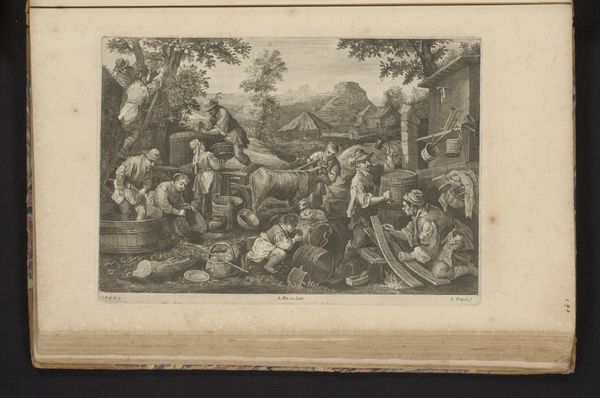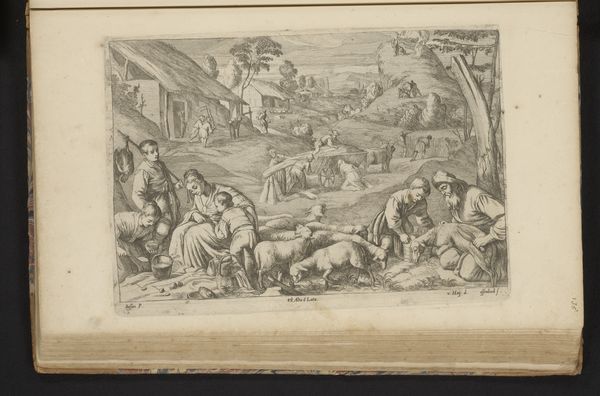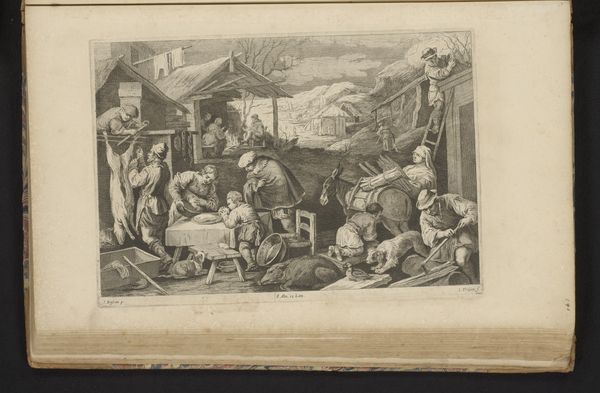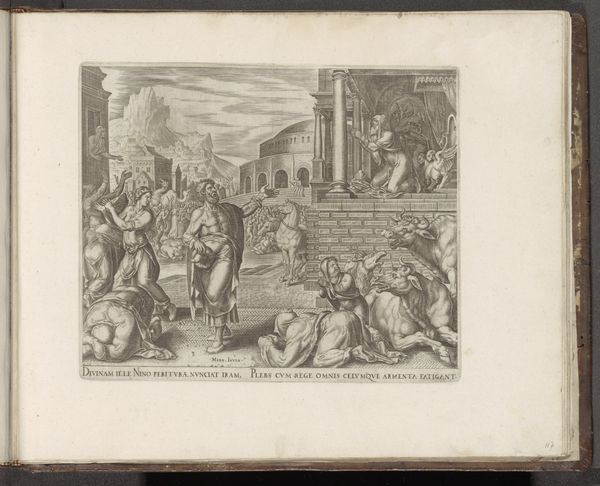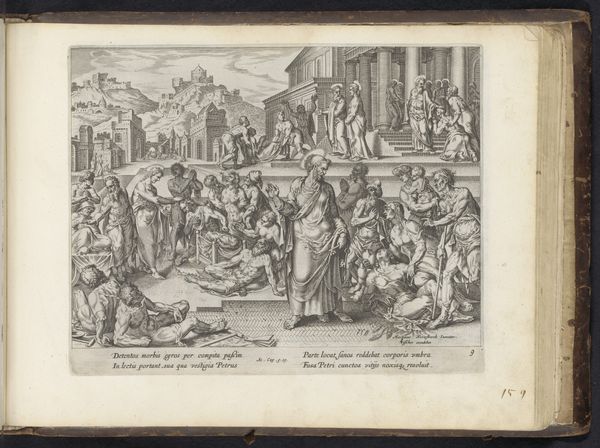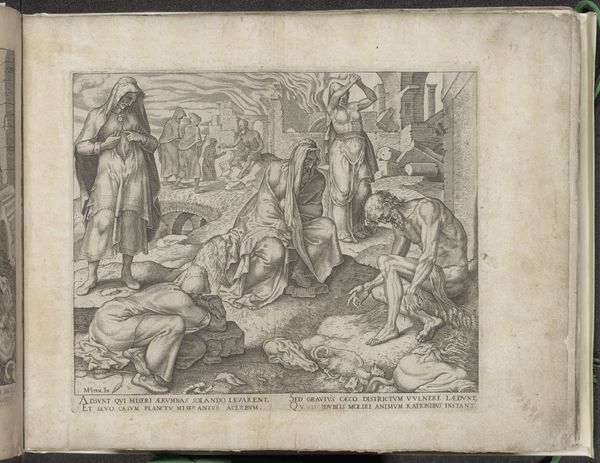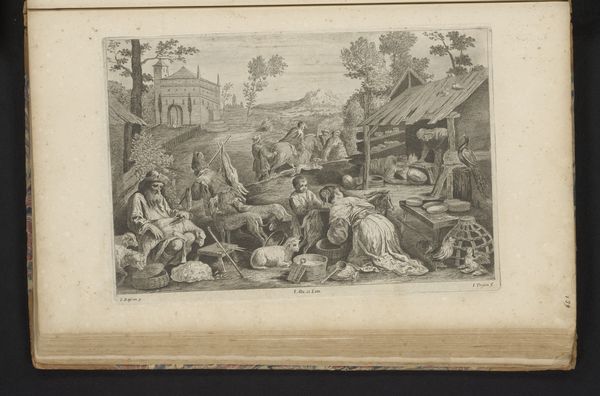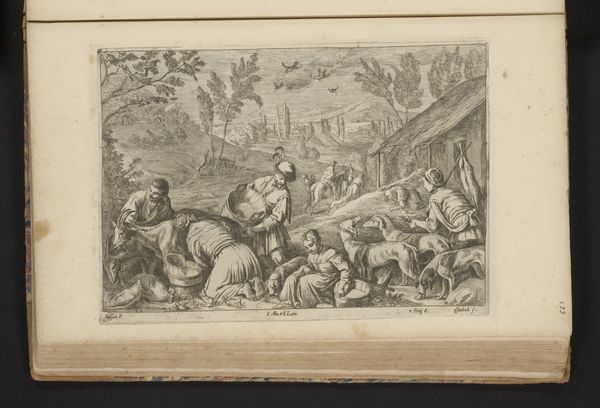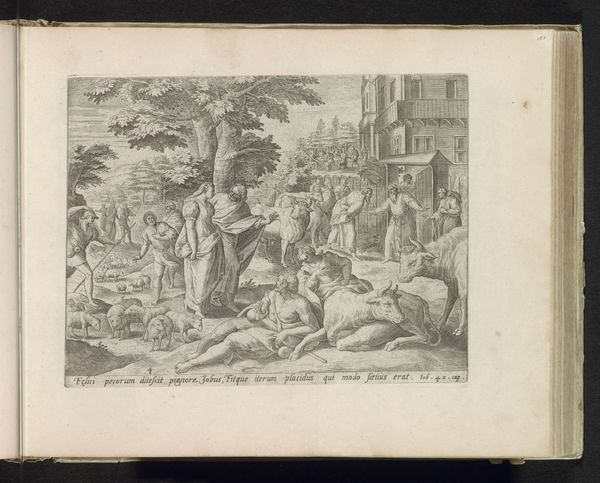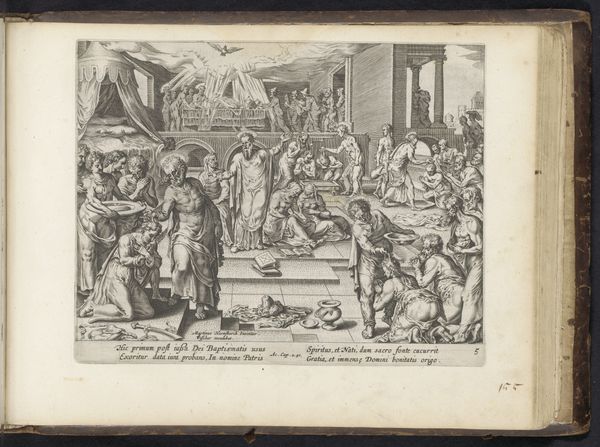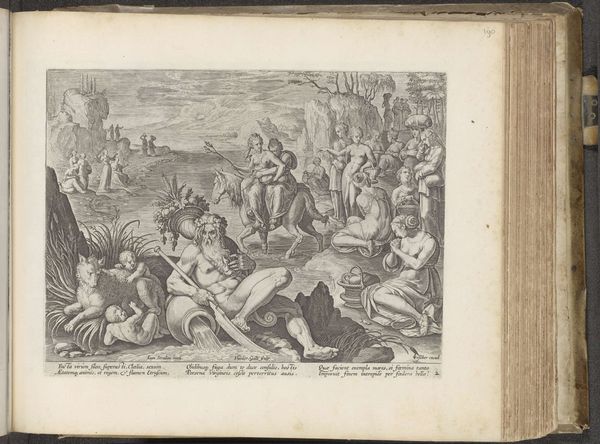
print, etching, engraving
#
narrative-art
#
dutch-golden-age
# print
#
etching
#
landscape
#
figuration
#
coloured pencil
#
genre-painting
#
engraving
Dimensions: height 212 mm, width 309 mm
Copyright: Rijks Museum: Open Domain
Curator: Looking at this scene, I'm immediately struck by its bucolic busyness – there's so much life swirling around! Editor: Indeed. We are viewing "Zomer," or "Summer," an engraving by Jan van Troyen, dating back to 1660. It resides here at the Rijksmuseum and offers a glimpse into Dutch Golden Age genre painting through the lens of printmaking. Curator: It really does. There’s labor, leisure, trade, food preparation. What I immediately respond to, and what pulls me in, is the layering. People positioned on different areas of the plane going about their day. Are these people idealized, or are they somewhat close to portraying the plight of lower classes? It is like a Breughel painting. Editor: It's crucial to unpack these layers, both literally and figuratively. The image depicts various activities associated with summer: harvesting, preparing food, commerce. We can analyze this print through the lens of labor studies, and cultural materialism. This allows us to explore issues of class, access to resources, and the seasonal rhythms that dictated so much of early modern life. What does summer *mean* within a culture largely defined by class? Curator: Right! Like, who profits from all this labor? But beyond that, there is also this visual enjoyment. And technically it is incredible how, by contrasting darker and lighter sections, Van Troyen managed to suggest space with etching techniques. The artist must have used an incredibly thin needle to get these effects! Editor: Exactly. And while we admire the artist's technique, we can also critically examine how these representations might have reinforced existing power structures. Were the lower classes idealized, vilified, or simply rendered invisible within such narratives? I guess there is some complexity that, while enjoying such idyllic view, Van Troyen captured a particular segment of the population for prosperity and consumption. Curator: It gives me so much food for thought! The amount of storytelling and socio-political commentary is quite astonishing. It truly embodies a period through its graphic art practices. Editor: For me, thinking about what stories or memories this tableau invokes feels really magical. It helps connect me not just to a place but also to time. It does capture, in its minute detail, a vibrant, specific sense of living, working and eating through a season, and to have access to it is in fact very powerful.
Comments
No comments
Be the first to comment and join the conversation on the ultimate creative platform.
